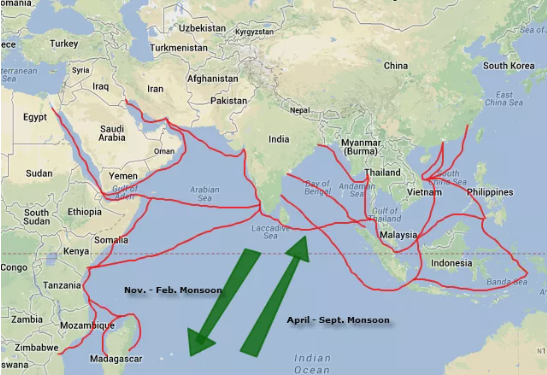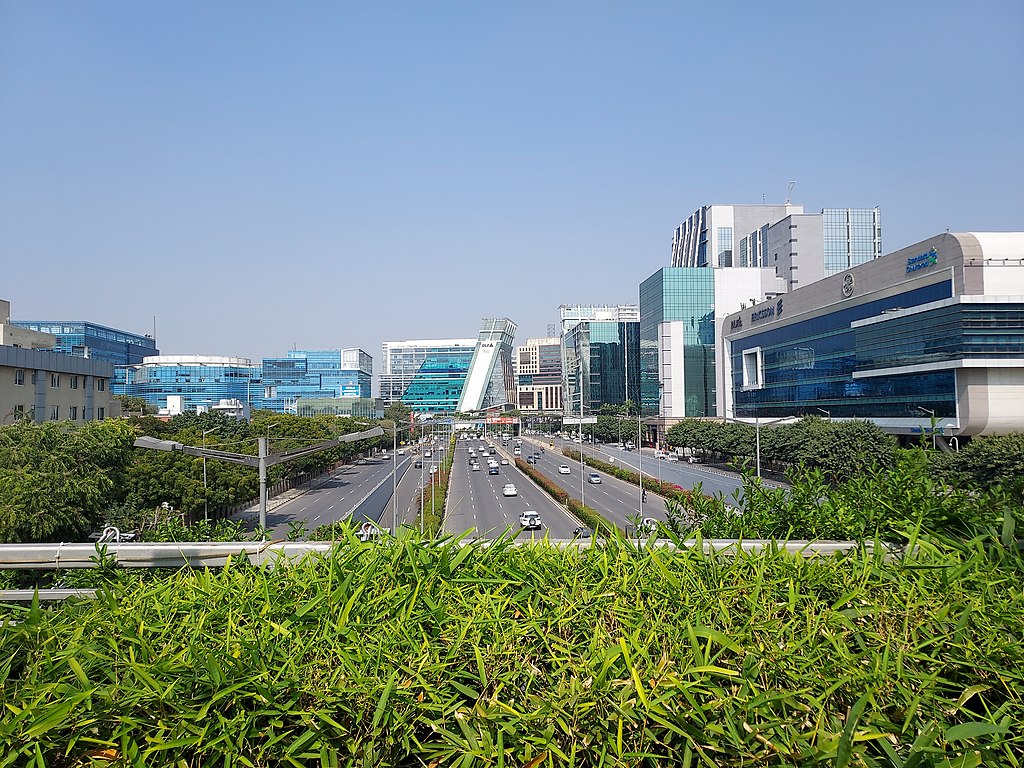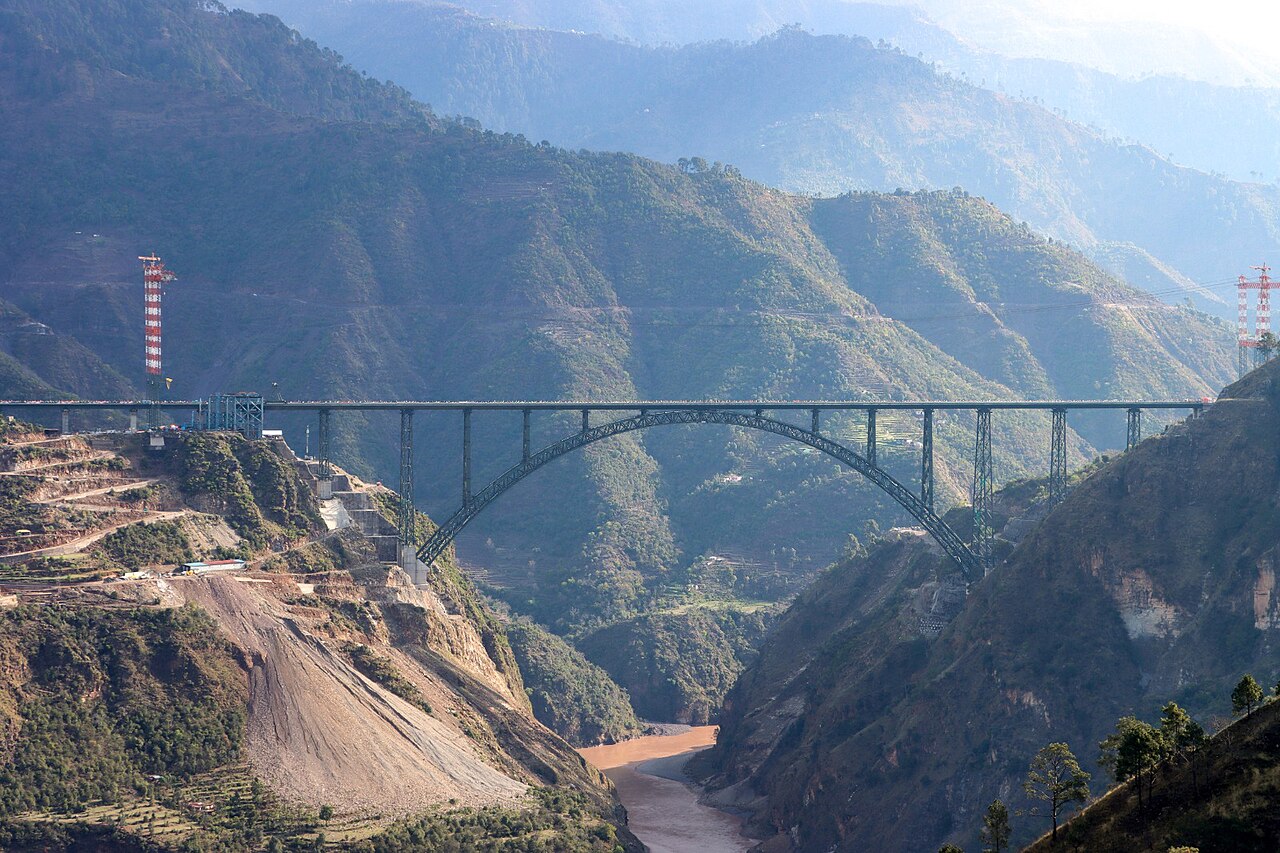
We live in a world that is connected beyond control. At any moment, people have access to data and information that was impossible to attain a few years back. In this situation, foreign investors have the tools and resources they need to scrutinize various countries.
This is mainly to determine which ones have the potential to act as a hub for their capital and growth. India is one such player with a diverse economy and good scope for Foreign Institutional Investors (FIIs).
Read on to learn what makes India an attractive option for international entities and the perspectives of FIIs in making their decisions. Could India be the next hotspot emerging right in time for foreign investors?
Foreign investors carefully consider several variables, including infrastructure, talent availability, access to raw materials, incentives, and logistical capabilities. This is conducted especially when evaluating India's potential as a relocation destination.
Because English is widely used as the core language of communication and India has strong Information and Communication Technology (ICT) skills, the country's economy has seen significant change.
This is true mainly in the services sector which never fails to keep growing and adapting to changing times. Due to these improvements, multinational companies now view India as a profitable place to invest.
From a foreign investor’s lens, here are some of the main reasons why Investors are looking at India as a viable investment option:
India has emerged as a major investment hub owing to its highly strategic geographic position. Situated at the crossroads of global trade routes, it enjoys seamless connectivity with Central Asia, West Asia, Southeast Asia, and East Asia, as well as access to major African and European markets via maritime corridors. This advantageous location enables India to act as a gateway for international commerce, offering companies direct and efficient access to a vast network of emerging and developed markets. As a result, investors view India not only as a thriving domestic market but also as a launchpad for expanding their business footprint across multiple high-growth regions.

IMAGE: The network of trade spanning the Indian Ocean, propelled by the seasonal monsoon winds.
India boasts an extensive network of industrial zones and dedicated manufacturing clusters spread across its vast geography, ensuring companies have reliable access to well-developed infrastructure and support services. These zones are equipped with modern logistics facilities, transport links, utilities, and industrial parks that enable smooth operations for both domestic and international businesses. Coupled with one of the world’s largest and most diverse labor pools, India offers a unique advantage of lower labor costs without compromising on workforce availability or skill adaptability. This blend of cost-efficiency and abundant human capital creates a highly competitive business environment. As a result, India continues to position itself as a favorable destination for foreign direct investment, offering investors not just operational savings but also a scalable and productive ecosystem for long-term growth.

IMAGE: A glimpse of Cyber City as seen from an overpass spanning the highway in Gurgaon, located within the Delhi NCR region, India.
India offers one of the largest and fastest-growing consumer markets in the world, underpinned by its massive labor force, a rapidly expanding middle class, and steadily rising disposable incomes. This demographic strength has created a resilient domestic demand base that makes India a highly attractive destination for global companies looking to scale their consumer footprint.
The country’s consumer durables and electronics sectors are witnessing sustained double-digit growth, driven by changing lifestyles, urbanisation, and increasing home ownership. According to the CMS Consumption Report 2025, average monthly spending on consumer durables surged by 72% in FY25, as more households invested in appliances to furnish new homes. India’s appliances and consumer electronics market—valued at US$ 9.09 billion in 2022—is projected to more than double, reaching nearly Rs. 1.48 lakh crore (US$ 21.18 billion) by 2025. Segments such as refrigerators, washing machines, air conditioners, and smart TVs are leading this surge: the refrigerator market alone is forecast to grow from US$ 5.4 billion in 2024 to over US$ 12.1 billion by 2033 at a CAGR of 9.37%, while the Indian AC market is expected to cross US$ 9.8 billion by FY26, spurred by record heatwaves and rising penetration in smaller cities.
India has also emerged as a global powerhouse in mobile and wearable electronics. The country’s wearable market shipped 134 million units in CY2023, registering 34% YoY growth, while smartphone shipments rose 8% YoY in early 2024 to 35.3 million units, with shipment values jumping 18%. Mobile phone exports have grown 77 times over the past decade, helping position India as the world’s second-largest mobile manufacturer. Electronics exports touched Rs. 3,27,891 crore (US$ 38.58 billion) in FY25, and the government is targeting US$ 300 billion in electronics manufacturing and US$ 120 billion in exports by FY26.
Global brands are responding with substantial investments to capture this consumer boom. Haier has committed Rs. 800 crore (US$ 93.7 million) to expand AC production and launch PCB manufacturing, while Daikin has invested Rs. 500 crore in a new R&D centre in Rajasthan. Foxconn has announced investments worth Rs. 1,200 crore (US$ 144 million) to bolster local manufacturing capacity, and Vivo is building a Rs. 3,500 crore (US$ 420 million) plant in Greater Noida. These moves are reinforced by strong policy support, including 100% FDI in electronics hardware manufacturing and the government’s Production Linked Incentive (PLI) scheme for white goods, which has already approved 64 applicants with committed investments worth US$ 814 million.
With a vast, youthful population eager to adopt new technologies and an expanding ecosystem of local manufacturing, India offers companies not just a sizeable consumer base but a high-growth market with long-term potential. The combination of accelerating demand, government-backed policy incentives, and global investor confidence firmly positions India as one of the most compelling consumer markets worldwide.
India’s democratic and secular republic framework serves as the bedrock of its long-standing political stability, which remains one of the country’s strongest advantages for foreign investors. With a robust multi-party system, peaceful transitions of power, and a vibrant civil society, India consistently upholds the values of transparency, accountability, and institutional independence. This stable political climate creates a predictable environment for businesses to plan and operate over the long term.
A key driver of investor confidence is the broad consensus among major political parties on core economic and industrial policies, ensuring continuity even during changes in government. Structural reforms—such as the Goods and Services Tax (GST), the Insolvency and Bankruptcy Code (IBC), and the Make in India initiative—have been sustained and expanded across successive administrations, signaling India’s commitment to fostering an open, competitive economy. This policy continuity is further reinforced by strong institutions, including an independent Election Commission, the Reserve Bank of India, and proactive regulatory bodies that maintain market discipline and financial stability.
India’s judiciary, one of the oldest and most comprehensive in the world, plays a pivotal role in safeguarding contracts, property rights, and investor interests. Specialised commercial courts and arbitration mechanisms have been introduced to speed up dispute resolution, while the country’s steady climb in the World Bank’s Ease of Doing Business rankings reflects improvements in legal enforcement and regulatory efficiency. According to the Department for Promotion of Industry and Internal Trade (DPIIT), India has attracted over US$ 600 billion in cumulative FDI since April 2000—underscoring the trust international companies place in India’s legal and political framework.
This combination of political stability, policy continuity, and rule of law forms a reliable foundation for long-term investments. It assures global enterprises that their capital, contracts, and intellectual property will be protected, making India one of the most secure and predictable destinations for doing business among emerging economies.
India has undertaken massive infrastructure development initiatives in recent years, recognising that world-class connectivity is critical to sustaining its economic growth and attracting global investment. The government has consistently increased capital expenditure allocations to modernise highways, ports, airports, rail networks, logistics parks, and industrial corridors—reducing transportation costs and improving the efficiency of supply chains nationwide. Flagship projects such as the Bharatmala Pariyojana, which includes 110 projects worth over USD 16.8 billion , and the Sagarmala programme, which has identified 839 port-led projects worth ₹5.79 lakh crore with 272 already completed , are transforming the country’s transport and maritime infrastructure. Meanwhile, the Dedicated Freight Corridor (DFC) is revolutionising freight movement by cutting transit times by more than half .
To accelerate the movement of goods and improve last-mile delivery, India has also invested heavily in multimodal logistics hubs, warehousing infrastructure, and digital freight platforms. The development of industrial corridors such as the Delhi-Mumbai Industrial Corridor (DMIC) and Chennai-Bengaluru Industrial Corridor (CBIC) is creating integrated townships with plug-and-play facilities, utilities, and high-speed freight connectivity, enabling companies to set up operations faster and more cost-effectively . These projects are supported by smart infrastructure initiatives under the Gati Shakti National Master Plan, which digitally maps over 1,400 layers of infrastructure to synchronise planning across ministries and reduce project delays.
This consistent focus on building physical and digital infrastructure has already begun delivering results: India improved its global Logistics Performance Index (LPI) ranking to 38th in 2023, up from 44th earlier , and average port turnaround time has dropped to just 0.9 days, outperforming several developed nations . By strengthening transport networks, enhancing cargo turnaround times, and streamlining clearances, India is significantly improving its ease of doing business. For global companies, this commitment to infrastructure development translates into faster market access, lower operational costs, and a more reliable ecosystem for scaling their operations across one of the world’s fastest-growing economies.

IMAGE: The Chenab Bridge rises an impressive 359 metres above the riverbed, featuring a single arch span stretching 467 metres across the powerful Chenab River. Once completed, it will stand as the tallest railway arch bridge in the world, an engineering marvel towering high above the Chenab.
The Bharatiya Janata Party’s (BJP) recent victories in key state elections and its continued dominance on the national stage have significantly shaped the sentiment of Foreign Institutional Investors (FIIs) toward India. These electoral outcomes have reinforced the perception of political stability and policy continuity—two critical factors that FIIs closely evaluate before committing long-term capital. Following the positive election results, FII confidence saw a marked upswing, reflected in sustained net inflows into Indian equities across diverse sectors.
Market analysts note that this resurgence in foreign investment stems from investors’ strengthened belief in the government’s ability to maintain a pro-growth policy framework and drive economic reforms consistently. Exit polls projecting a stable political mandate had already triggered strong buying activity, with FIIs reportedly infusing several thousand crore rupees into Indian stocks in anticipation of continued policy stability. The post-election follow-through has validated those expectations, signalling that institutional investors are positioning themselves for India’s long-term growth story rather than reacting to short-term volatility.
Industry experts emphasise that FIIs typically follow a dynamic investment strategy, weighing political stability, regulatory predictability, and macroeconomic prospects when allocating funds. Equally important are their exit strategies, which often hinge on shifts in policy direction, fiscal discipline, and market liquidity. Political uncertainties, abrupt policy reversals, or macroeconomic slowdowns can prompt them to divest or reduce exposure. However, the current political landscape—marked by continuity in leadership, pro-business reforms, and infrastructure push—has helped ease many of these concerns.
This alignment of political stability with economic ambition has made India one of the most compelling emerging markets for global investors. As confidence builds on the back of steady governance, transparent policymaking, and a robust legal framework, experts believe that foreign portfolio inflows could continue to rise steadily, deepening India’s capital markets and strengthening its position as a preferred investment destination.

A close-up image of two investors shaking hands
FIIs follow a dynamic investment strategy, assessing political stability, policy continuity, and economic prospects. At the same time, the exit strategies for FIIs are equally interesting to observe.
Political uncertainties, policy changes, and economic downturns can influence their decisions to divest. However, the recent political stability and the favorable business environment created by the government have mitigated some of these concerns.
| Period | FII Cash Net Inflow / (Outflow) | DII Cash Net Inflow / (Outflow) | Key Notes |
|---|---|---|---|
| 15 Sep 2025 | – ₹1,268.59 crore (Trendlyne.com) | + ₹1,933.33 crore (Trendlyne.com) | On this date, FIIs were net sellers in the cash segment, while DIIs were net buyers. |
| 12 Sep 2025 | + ₹129.58 crore (Trendlyne.com) | + ₹1,556.02 crore (Trendlyne.com) | Small positive net inflow from FIIs; DIIs showed stronger buying. |
| Full month (13 Aug-12 Sep 2025) | Slightly negative on balance for FII Cash (net outflow) (Trendlyne.com) | Positive for DIIs (net inflow) (Trendlyne.com) | Overlapping political stability and investor expectations may be impacting flows. |
While challenges such as global market volatility, geopolitical risks, and cyclical economic shifts persist, India’s structural strengths continue to position it as one of the most compelling destinations for long-term foreign investment. The country’s enduring political stability under a democratic framework, coupled with policy continuity and a strong rule of law, has created an environment of predictability and trust—key elements that global investors value when allocating capital. The Bharatiya Janata Party’s recent electoral victories have further reinforced this perception, driving renewed confidence among Foreign Institutional Investors (FIIs) and fuelling consistent equity inflows despite intermittent global headwinds.
Simultaneously, India’s ongoing infrastructure transformation is reshaping its investment landscape. Landmark programmes such as Bharatmala, Sagarmala, and the Gati Shakti National Master Plan are reducing logistics costs, accelerating the movement of goods, and unlocking new industrial hubs. Modern highways, dedicated freight corridors, and world-class ports are enhancing last-mile connectivity, lowering operational barriers, and enabling businesses to scale faster. These infrastructure gains, combined with India’s vast network of industrial zones and manufacturing corridors, offer companies immediate access to well-developed facilities and supply-chain ecosystems.
India’s demographic and consumer strength further amplifies its appeal. With one of the world’s largest workforces, competitive labour costs, and a rapidly expanding middle class, the country provides not only a deep talent pool but also a massive, fast-growing domestic market. Surging demand for appliances, electronics, and consumer durables—supported by rising disposable incomes and urbanisation—is creating long-term revenue visibility for global brands. Simultaneously, robust FDI inflows and government-led incentives such as the Production Linked Incentive (PLI) schemes continue to strengthen local manufacturing and exports, deepening India’s integration into global value chains.
This convergence of political stability, infrastructure expansion, industrial capacity, demographic strength, and investor confidence has made India a standout among emerging markets. As capital markets deepen and reforms gain further traction, India is expected to remain firmly in the spotlight—offering foreign investors a stable, scalable, and future-ready growth destination for decades to come.
P.S: This post has been updated (12th September 2025) based on the latest data and sources cited within the article.
Disclaimer - Skrill Network is designed solely for educational and informational use. The content on this website should not be considered as investment advice or a directive. Before making any investment choices, it is crucial to carry out your own research, taking into account your individual investment objectives and personal situation. If you're considering investment decisions influenced by the information on this website, you should either seek independent financial counsel from a qualified expert or independently verify and research the information.
Tags:
RECENT POSTS
TAGS
Subscribe to the Skrill Network Newsletter today and stay informed
Recommended Articles